
Mike K
-
Posts
583 -
Joined
-
Last visited
Content Type
Profiles
Forums
Blogs
Gallery
Events
Store
Posts posted by Mike K
-
-
Hi,
Dan, interesting theory and one which I am rapidly coming around to!
I saw Wild Card's cross and noted the "KMST" catch support, but I did not make the connection with the label - really well done

I had never believed that Kriegsministerium actually made the crosses - I always read it as the Kriegsministerium holding the patent (DRGM) for the marking.
Koenigliche Muenzamt Stuttgart does make more sense, as they are much more likely to be experimenting with attachment hardware and lodging patents - probably with a specialised government department that had nothing to do with the Kriegsministerium.
I can provide one further piece of evidence (which I had not previously realised the significance of - it had actually bothered me a bit until now) and show the following KMST variant (a later stamped marking) which actually reads KMSt - note the LOWER case "t" - see below (no periods at all on this style). Out of interest, note that the incuse relief mark on the pin only reads "KM".
Interesting that KO examples (Koenigliche Muenzamt Berlin) are "slightly" more common than their Stuttgart counterparts!!
Regards
Mike
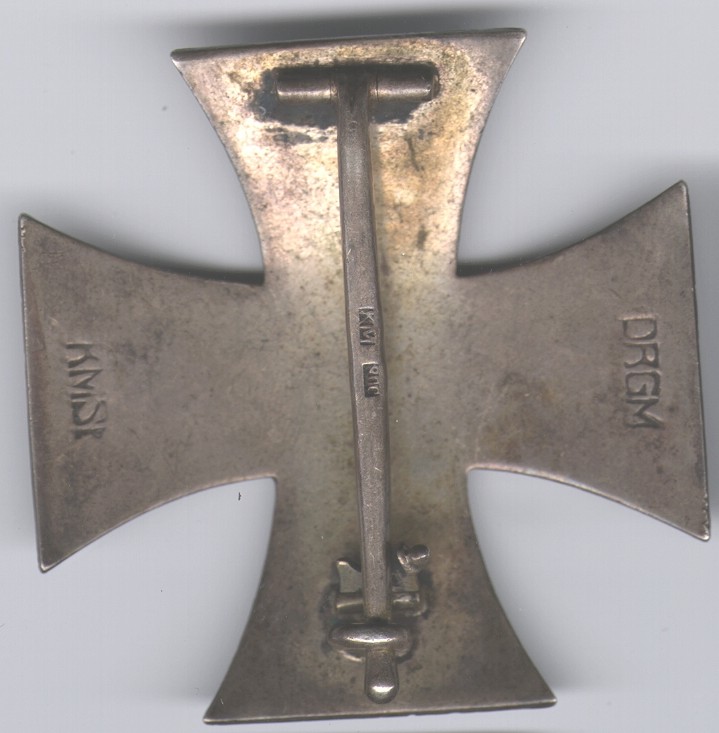
 0
0 -
-
Hi Mike, what is your thought of the last badge shown?
thanks
Hi Don,
I think the AWS is quite believable. The details are very good and the owner stated in the WAF thread that he thought it was die struck. I have noted though that it is exactly the same type as Rick posted at the top of the thread - and different to the type I have (so disregard that part of my reply in Post#2!). Gor's comment in Post#20 is of serious concern if he is implying that they are currently being made in Russia though - I'm not sure if something is being lost in translation though.
I've been going over the various types types again. My type is actually like the example Dan posted images of (without the eyes and top bone adjacent to the skull cut out though). Different hinge/pin/catch as well. Both appaer to be marked for silver content behind the right tank gun though - hence the unusual obverse "squashed" appearance of the gun. For what it's worth, I believe my example to be die struck. It does not image well because it is uncleaned - the patina makes the details look "rough" when in fact they are not. There is a story behind it, but not documented and not German veteran related - therefore irrelevant. Do I believe it is 100% genuine (pre-45) - NO, but it is imo believable based on construction and hinge/pin/catch and there's a good chance that it's at least of 1930s construction. For what it's worth, I've seen other badges with this obverse design certified by some of the bigger German dealers (Niemann included).
It represents one of only two imo believable types with the "incuse relief" tank guns and artillery bursts - the "AWS" being the other type (although similar, the wreaths, skulls and artillery burst "berries" are some ways of distinguishing the two types). There are other believable cliques of the type Robin has imaged.
The one example is still definitely do not like in this thread is that raybacked Juncker example with the crown marking and reverse which looks like it was lifted from a differently shaped (?Pilot's) badge. All the other look good but remain questionable (mine included).
Regards
Mike
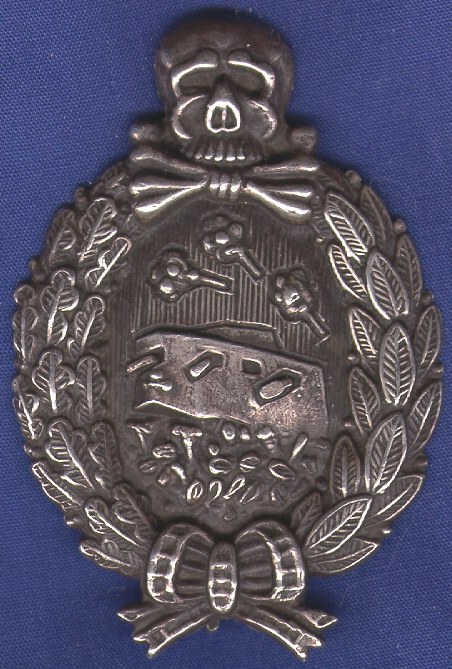

 0
0 -
Hi,
Rick, my understanding of this badge is that it was commemerative and that it was APPLIED for, not awarded. I have read that in the FIRST batch there were 100 or so badges, made by Juncker.
Yes, reality check, the badge is rare - imo nobody can argue with that, certainly not me. I also don't think there would be that many variants, and when you look through the badges that are half-believable based on construction and details, there are NOT that many different/distinct types of obverse design for this badge - maybe only 3 or 4 of the large skull type (but I have not studied them in super detail because I have not seen many half believable examples). From what I've seen, believable examples (not the obvious glitzy eBay repros) do not actually appear on the market all that often, certainly much, much, much less frequently that believable Pilot's Badges.
Further, although 100 is a firm number for the first batch, how many veterans may have obtained them after the first batch received theirs - either as replacements, duplicates or those who missed out on the first batch? How many were produced for display purposes, etc? I agree, even so, there still would not have been all that many genuine badges produced.
And here's the big question, if only 100 were ever "authorised", why are there TWO distinct types of badge (totally different skulls) evident in period (pre-45) photos?
Regards
Mike
0 -
Hi,
Rick, S&L certainly seem to have been the main player from the 70s/80s onwards but they shared the early work with other WW2 firms like Deumer. I have a Deumer advert from a 1958 German publication specifically dealing with officially sanctioned BundesRepublic awards. There are 1957 EK1s that bear their WW2 L/11 marking and 1957 EK2s with "3" stamped rings - ie for their earlier 57er efforts they were using WW2 stock. Assmann were also active at some stage, as there are some marked examples of their work in circulation. Other WW2 manufacturers are also known to have produced early 57er awards.
Regards
Mike
PS: I strongly agree with the other who have stated this is most likely an unmarked Deumer example.
0 -
....and no, in case you haven't figured it out, I'm definitely not one of the "big guns" being referred to!
Reverses....
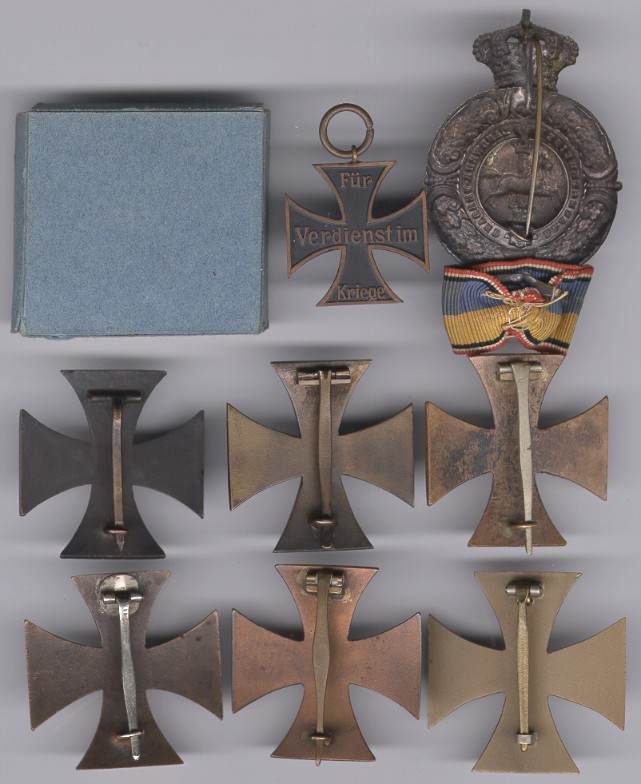
 0
0 -
Hi,
Wow! I love the enamel! Love those Steckkreuz!!
But back to some common items. There are examples of KVK1s from all periods - WW1, 20s/30s, Third Reich and 57er. The cross below the etui is the one that belongs in it.
Regards
Mike
Obverses...
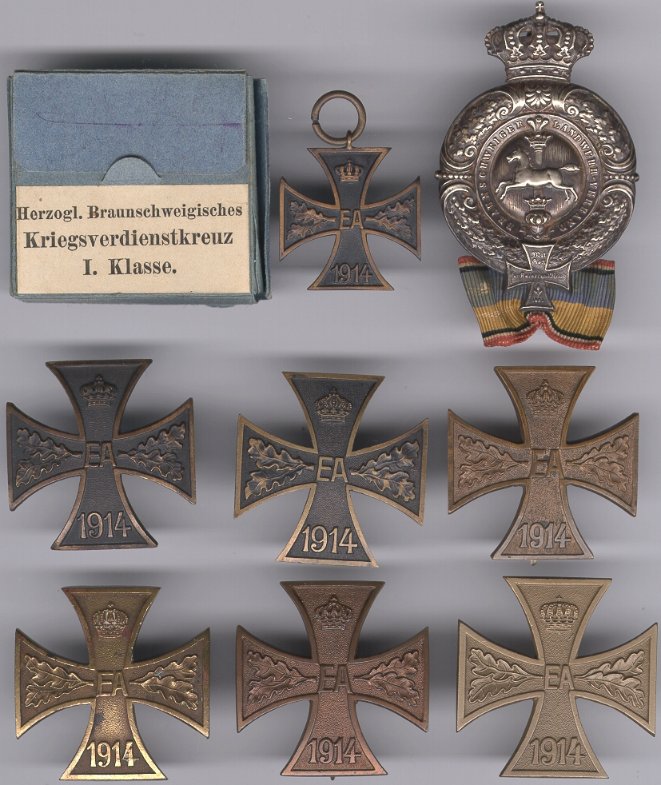
 0
0 -
Reverses...
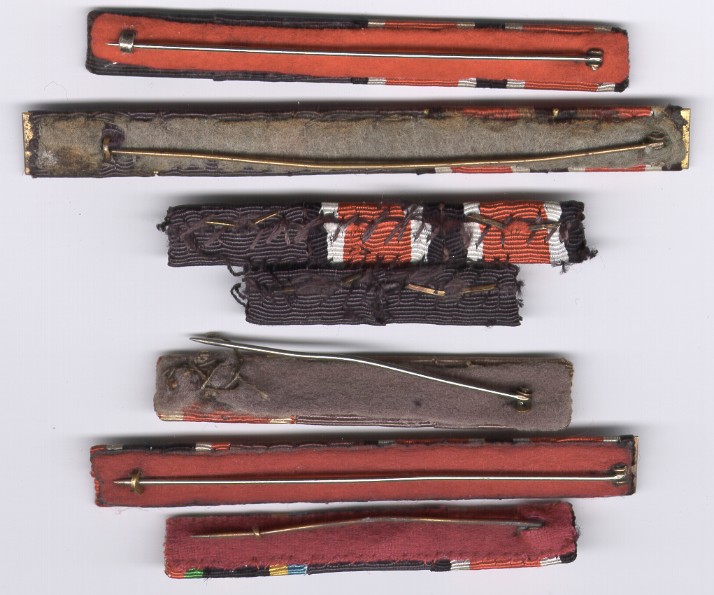
 0
0 -
Hi,
I've had a look and surprised to find that there is no dedicated thread for 57er Bundeswehr Ribbon bars.
My few examples are below. Note that they are ones with no cause for concern, unlike many that seem to be popping up on eBay these days.
Please add your unquestionably genuine ones!
Regards
Mike
Obverse...
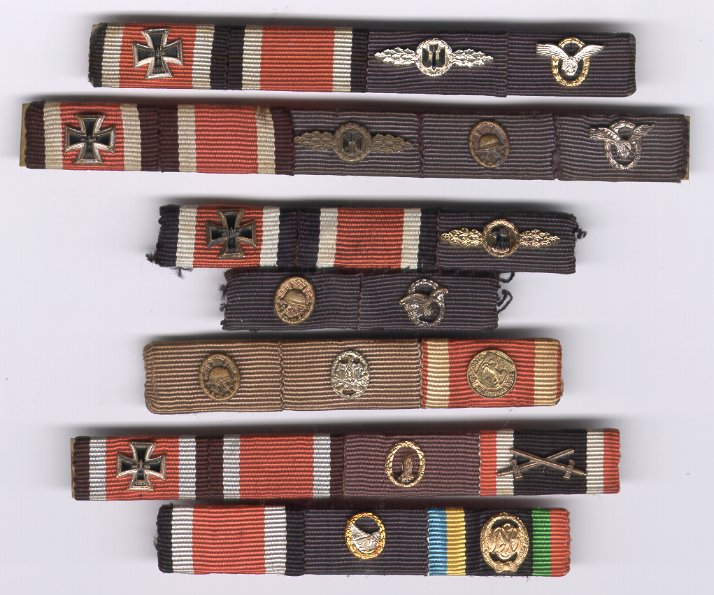
 0
0 -
Hi,
I've been meaning to add this for a while. A reference in German published in 1958 which covers all "official" awards of the time, including WW1, 1957er re-issues and Bundesrepublic (West German) awards.
Regards
Mike

 0
0 -
Hi,
Steven (and Jens if you look back in on this), do either of your crosses have any marks under the pin - a "v" or "y" perhaps?
Regards
Mike
0 -
Here's pictires of my Baltic Cross. I bought it in 1969 for ?2.50. Never knew what the were awarded for. Can someone enlighten me?
Hi Stan,
The cross was awarded to volunteers in the Baltische Landwehr with a minimum of 3 months service. They campaigned in the Baltic region against the Bolshevics. There was apparently no official first or second class - the award was meant to be hung from a ribbon but pinback versions became common. There were 21,839 official awards, but many more would have been produced. Like the Schelsien Adler, the Baltic Cross was officially sanctioned for wear after 1935. Most of this basic info can be found in Angolia's For F&F, Vol 1.
Your cross looks like the same type as my lower right example - yours is in better condition and cost a bit less (at least at face value) than mine did!
Regards
Mike
0 -
Hi,
Some really nice crosses are appearing here - great!
Jef, your example uses 4 bent prongs for attachment, correct? Not common, but if you have a look at the following thread you'll find his brother - same attachment method, same/very similar hinge and apparently the same Fleurs-de-lis;
http://www.wehrmacht-awards.com/forums/sho...ad.php?t=165794
I forgot to mention it, my pinback on the lower right uses a 2 bent prong attachment method - hard to make out due to the pin and the vaulting making the reverse scan a bit blurry.
Bob, I'm sure the vast majority of these were unmarked. I'm positive I've seen a marked Meybauer example though.
Ralph, pristine pinback and a killer mini!
Regards
Mike
0 -
-
Hi,
We've had a great thread on the Schlesien Adler, so how about a similar one for the Baltic Cross? I'll show you mine. Please show yours!
Note that no two of the examples to follow share the same gilt cross attachment - compare the differences in the forms of the "fleurs-de-lis". The lowermost (very worn) pinback is very heavily vaulted whereas the two other pinbacks are only lightly vaulted and the ribbon mounted example is almost flat.
Regards
Mike
Obverse...
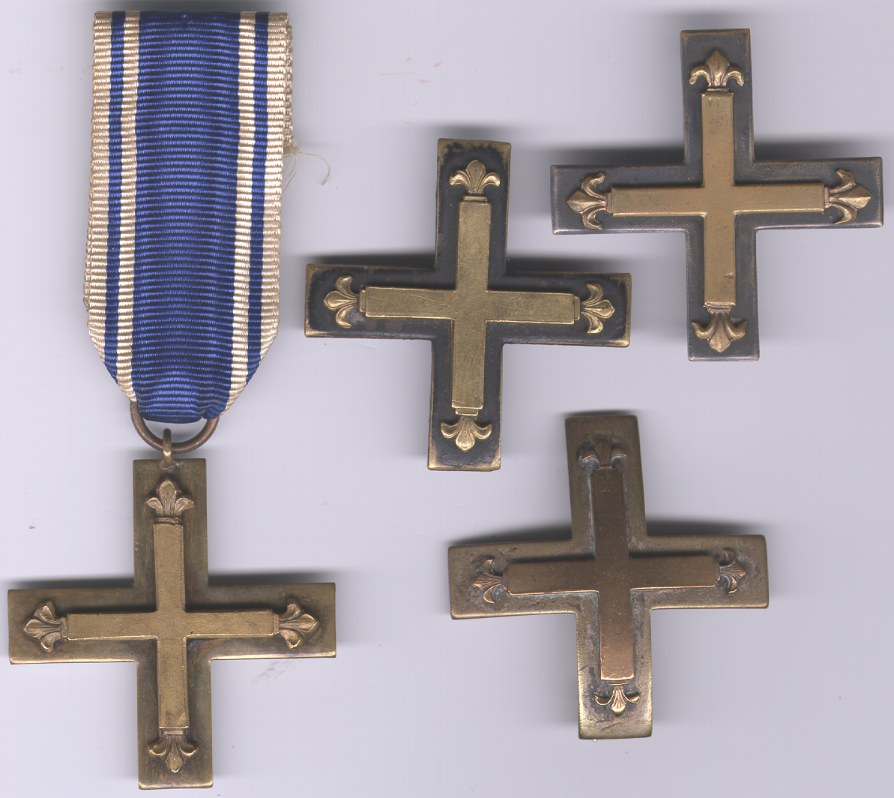
 0
0 -
Hi guys,
Many thanks for all your efforts! It is much appreciated.
Here's a scan of the cross. No maker's mark, only the 800 stamp. Unfortunately the cross has been very neatly repainted at some stage.
Regards
Mike

 0
0 -
Hi SPM,
Many thanks for your time and effort - it is much appreciated!
Regards
Mike
0 -
Gents,
I was surprised to find upon examining a new EK1 arrival that it has been neatly hand engraved. I'm having a bit of trouble deciphering some of the lettering, so I'd like to ask for some help there. I've posted a large and fairly clear image (reduced in bit size/resolution though) - note that there are some light wear and tear scratches over the engraving in places. I can make out;
The date (not show) on the upper cross arm; 18.9.1917
Friedrich ??Rau Lt u. Ba????
6 ?L?o??? / ?L or ?4 Fus Art 10
Could someone confirm/complete the deciphering?
And the big ask - once that's done, is there any further info available for him?
Regards
Mike
PS: after some searching, it seems Rau is a genuine German surname whereas the other possibility of Plau is not.
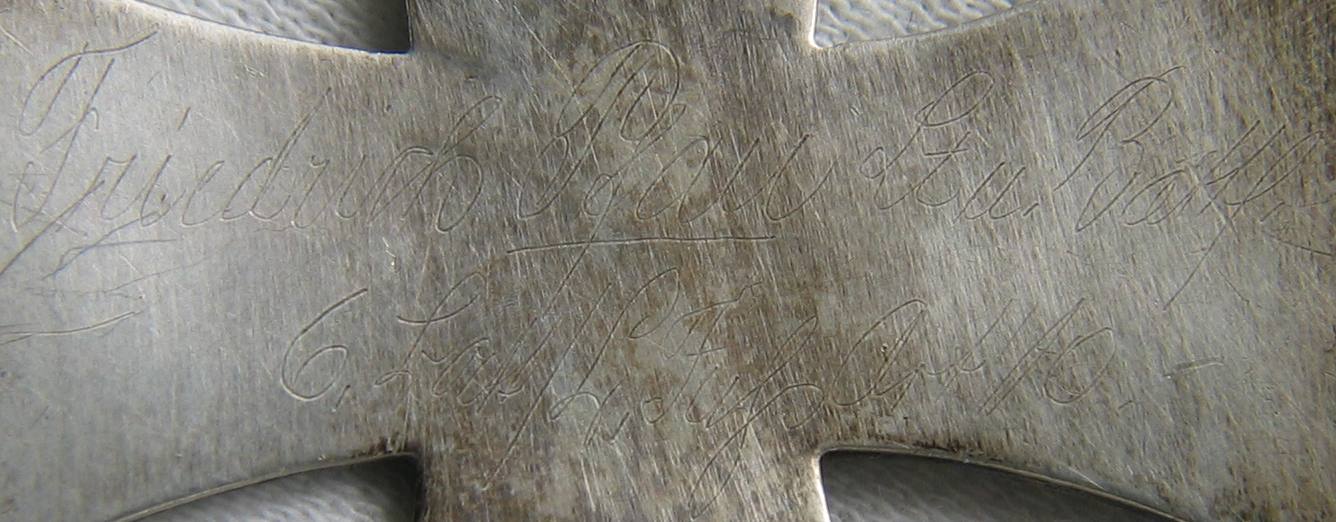
 0
0 -
Rather strange they would make '57 EKs when there is no evidence to indicate they made '39-45 EKs.
There may not be any MARKED ones but their period catalogue certainly suggests that they sold them;
Look at Post #4 in; http://gmic.co.uk/index.php?showtopic=6787
Regards
Mike
0 -
To answer Peter's question, it looks like Meybauer had 3 dies for their Schlesien Adlers. The first for their enamel version - very different. The other two for their "solid" versions - many distinct obverse differences as Peter noted. There would be no problem having enamel and solid versions - that would cater for high quality and budget demands. The two different solid versions is more interesting - possibly indicative of a long period of production (which is likely given that the Schlesien Adler was officially approved for post-34 wear AND that Meybauer as they were very active from WW1 through WW2) and die replacement.
I've put a comparison pic together below (resolution has been seriously reduced to get under the file size restriction). Apart from the Meybauer maker mark and normal style hinge/pin/catch, you'll note that all 4 examples also have very similar tiny rivets. 3 of the examples (one from each of the three very different types of obverse) clearly have the diagonal lines on the reverse, possibly indicating a shared reverse die during some point in the production using different obverses. Interestingly enough, there also appear to be two different styles of cresents and Schlesien shields - the two upper examples appear to share the same add-ons, similarly the two lower examples appear to share the same add-ons.
Regards
Mike
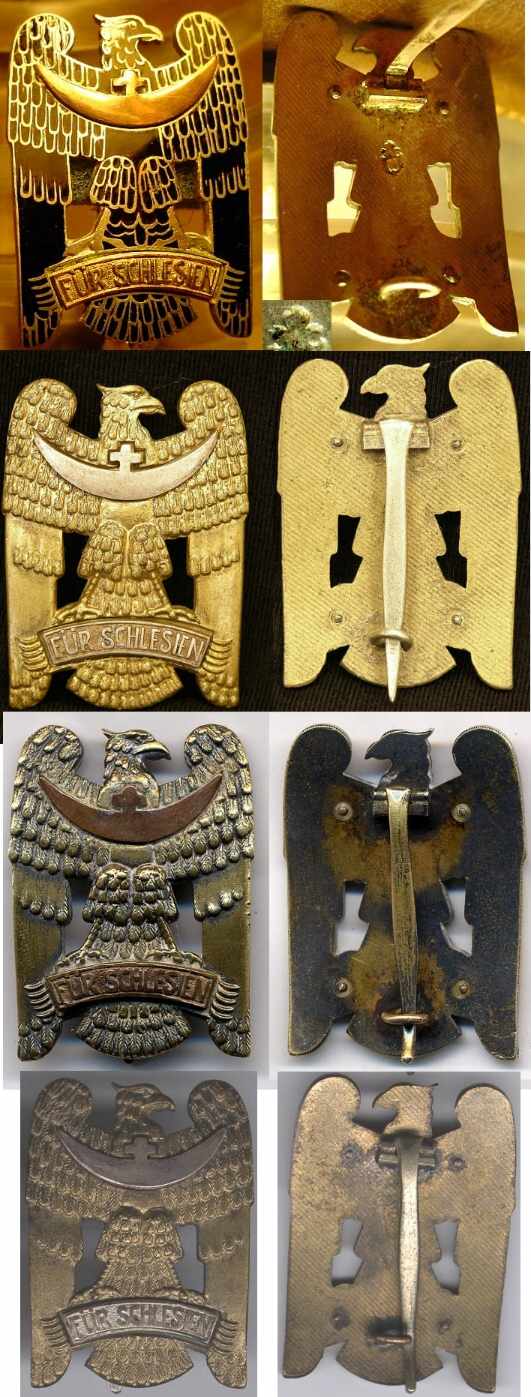
 0
0 -
-
Hi,
A new arrival - my first NON-enamel first class! This one is made from iron/steel and has a very definite "been there" look.
Regards
Mike
Obverse...
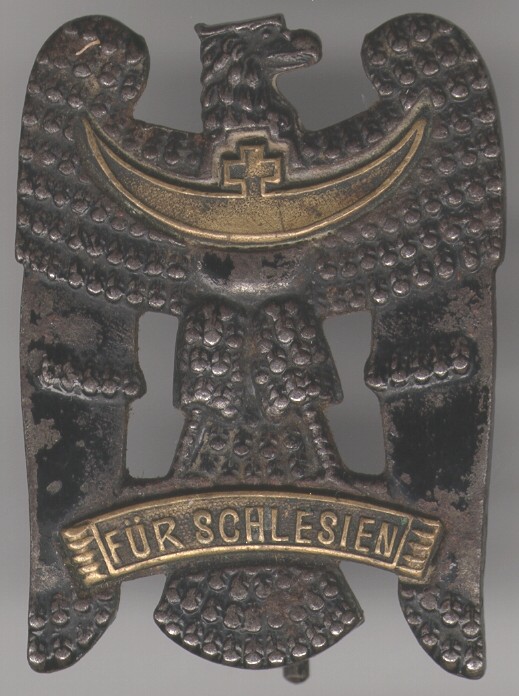
 0
0 -
Hi Guys,
Many thanks for the great response!
Good to know I'm not going crazy and that the blue w/ white striped ribbon is an unsual/hard one to ID.
Rick, thanks also for the possible ID on the 3rd blue ribbon. This is the first non-com EK2 ribbon bar I've purchased and the Waldeck (and now W?rttemberg connection) makes it even nore attractive - even if it is a bit tatty! Nice to hear that is also an earlier bar.
Fyi, the backing is actually a very dark blue (not dark brown as per the scan), so I assume navy? Any chance of an ID?
Kind Regards
Mike
0 -
Reverse, which shows the colours a little more realistically. The top bar is stamped "DRP"...
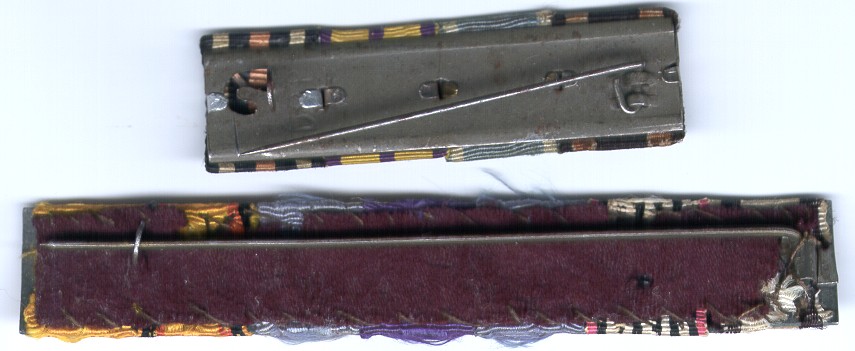
 0
0


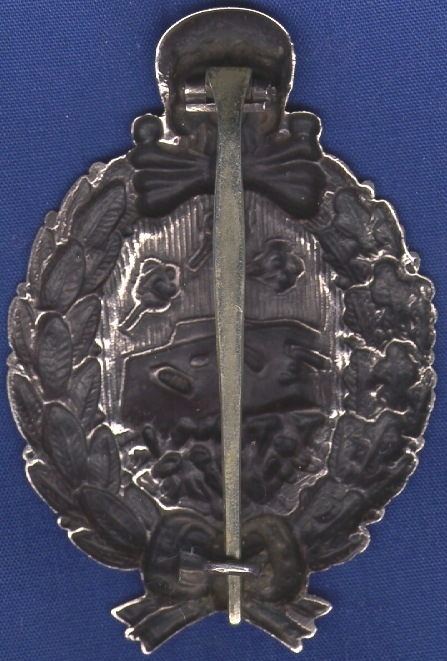
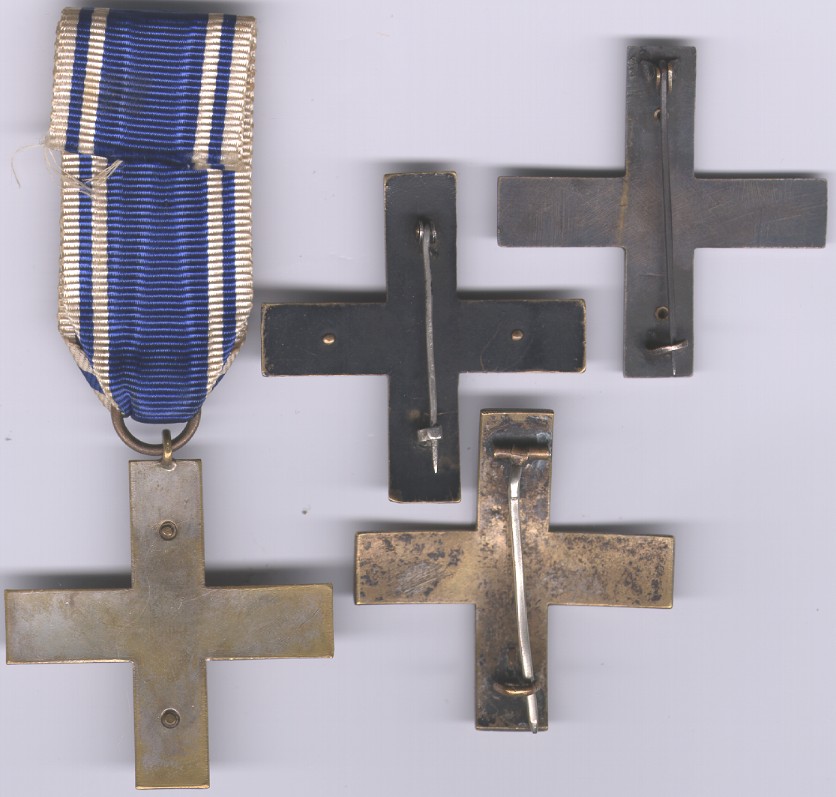
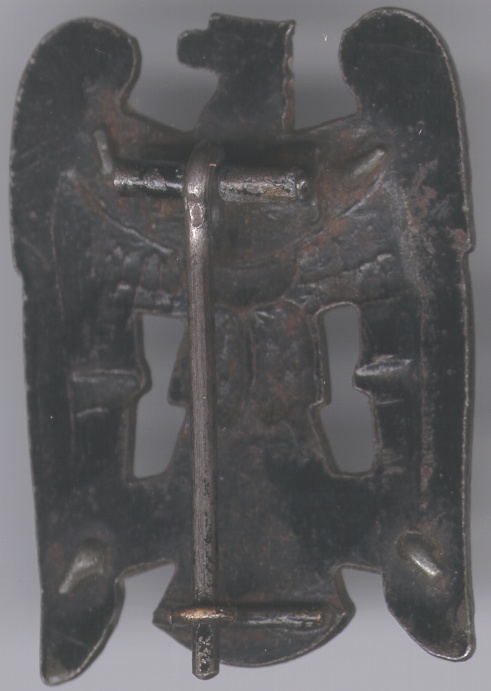
An interesting coincidence
in Germany: All Eras: The Iron Cross
Posted · Edited by Mike K
Hi Dan,
Yes, the variant I showed is one of mine.
I have always believed the KM marked EK2s to be "KMST"s - the problem is I don't have one Fyi, imo the obverse core (and frame) of your EK2 is similar to that used on KMST marked EK1s. I was just having a second look and notice a slight difference at the very base of the crown though - it may be lighting differences though.
Fyi, imo the obverse core (and frame) of your EK2 is similar to that used on KMST marked EK1s. I was just having a second look and notice a slight difference at the very base of the crown though - it may be lighting differences though.
I've cobbled together a comparison using a bad scan of the obverse of my example above.
Regards
Mike
PS: now that the cat's out of the bag re the KM EK2s, no doubt they'll jump in price to 200 Euro tomorrow.